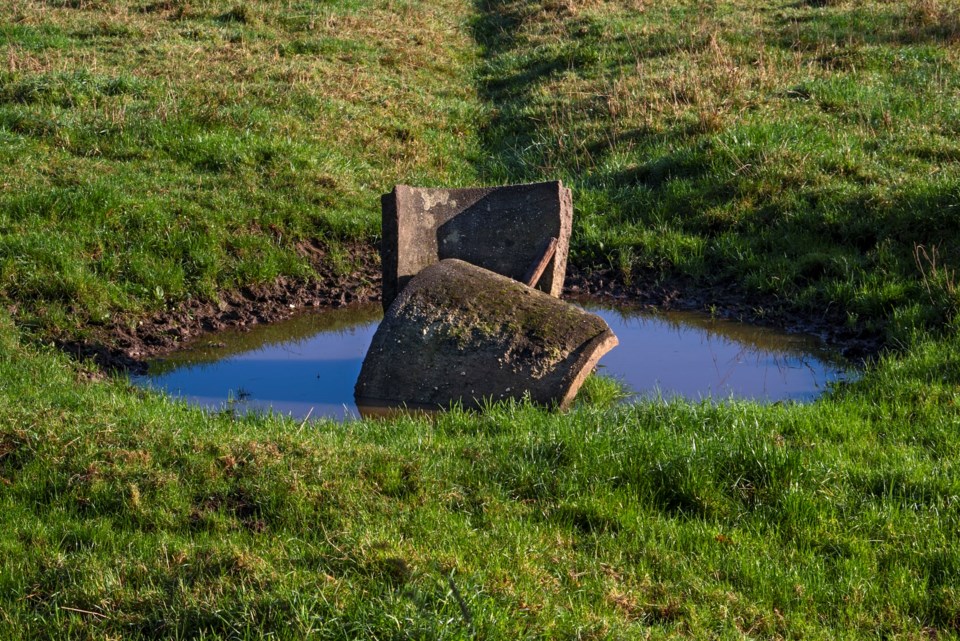Water well owners in Rocky View County have been invited to a free online workshop on Feb. 15 to learn the basics of how their well works, how to properly maintain it, and how to identify and deal with problems that may arise.
Hosted by the County, the Working Wells program has taught rural landowners about their wells since 2008 with staff from Alberta Agriculture and Forestry, Alberta Environment and Parks (AEP), Alberta Health Services, and licensed local water well drillers.
“This has been a workshop we have offered every year for over 10 years,” said Ashley Stewart, RVC’s agriculture services officer. “It has always been a popular workshop as the majority of RVC residents rely on wells for water.”
Together with municipalities across the province, the Working Wells program has delivered 359 workshops to more than 9,500 people since 2008, according to lead workshop presenter, Curtis Snell.
“We want to raise awareness to help water well owners recognize the management of their private wells is their responsibility. They need to be educated about it and they need to know the effects of human activities on that well and groundwater resource,” he said.
Prior to the workshop, participants will receive an email with information on how to find their well records and the task of locating the information for their well.
AEP has a groundwater information centre with most well records drilled in Alberta, Snell explained.
Once in the workshop, there are several topics that will be covered over the span of the presentation, which will last about two-and-a-half to three hours.
Snell said this workshop is valuable for anyone moving to an acreage, considering drilling a well on a subdivision, or even those who have been living on a farm with a working well for decades.
“A lot of folks don't know what they should or shouldn't be doing,” Snell said. “There's only one groundwater resource, so we want to protect that and we want to make sure people are safe when they're drinking their water.”
The workshop will first dive into the responsibility of taking care of a well and understanding the basics of groundwater.
Participants will take a closer look at how their wells are constructed via their driller’s logs, and learn about details like the depth, location, where the pump is placed, their well screens, and even what formations were drilled through to create the well.
Having the driller’s report can help identify problems later on, Snell explained, and added well owners need to be aware of problems that could arise and how to solve them to keep their family and livestock safe.
In a normal in-person workshop, each participant would draw their well to visualize and understand what’s going on in their well. But in the virtual workshop, the presenters will show an example and participants can draw their wells on their own.
After learning about the basics, different common problems will be presented that well owners can learn to identify.
Snell explained that if a well was drilled down 200 feet deep, producing good quality water at 10 gallons per minute, it should still produce that same amount 10 years later if maintained properly.
“If you overuse your well, you will damage the well infrastructure, leading to reductions in yield, degradation in water quality, and so on,” Snell said.
The driller can explain how much the well and aquifer should produce, he added.
Another issue identified in the workshop is well contamination, which can be caused by not abandoning or reclaiming an old well properly, not having a well cap, or having a well pit.
Snell added that well pits are outlawed now, but some still exist in the province and can be very dangerous. He said it’s important to have a qualified person working on a well pit.
Snell quoted a hydrogeologist he has worked with on different projects, who said that the first and best way to contaminate an aquifer is to build a well in it. This is because a well acts as a conduit directly into the aquifer, Snell explained.
He later noted that there are many holes being drilled in the ground across the province, and if by maintaining the existing wells and making them last longer, that means one less hole being drilled in the ground.
“In all of this, we're always talking about maintenance. There's certain things you should be doing to make sure you can keep that well in good condition,” Snell said. “One of the main ones would be not over-pumping, [and] doing regular water testing so you can get baseline information on your water quality.”
If the quality of water changes, there’s usually a problem, Snell said. There are things people can do like shock their well, using a chlorination process that kills bacteria.
Six months after the workshop, participants will be contacted to follow up on what they thought of the information in the workshop and whether they followed up on issues they may have identified with their wells.
For more information on how to maintain a water well, go to alberta.ca/working-well-overview.aspx or sign up for the RVC virtual workshop on Feb 15, at 6:30 p.m. via rockyview.ca/events



